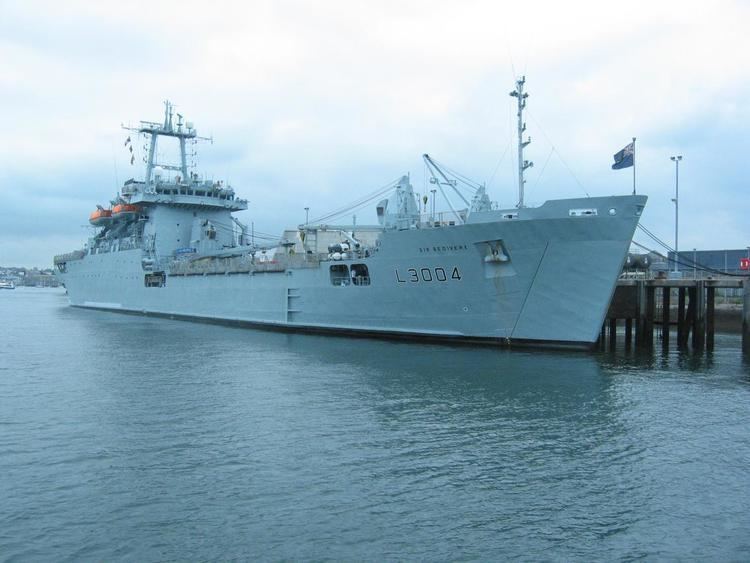Built 1962-1967, 1985-1986 | ||
 | ||
Name Round Table-class landing ship logistics Builders FairfieldsStephensHawthorn LeslieSwan Hunter Preceded by | ||
The Round Table class, also known as the Sir Lancelot class, was a British ship class designed for amphibious warfare missions in support of the main amphibious warfare ships. They were designated landing ship logistics (LSL).
Class history
In December 1961, the Ministry of Transport ordered the first in a new class of 6,000-ton military supply vessels from Fairfield Shipbuilding and Engineering Company of Govan. The class was designed to replace the World War II-era Mark 8 Landing Craft Tank vessels in service. The first ship, Sir Lancelot, was launched in June 1963. In March 1963, two more vessels were ordered, with Sir Galahad and Sir Geraint launched by Alexander Stephen and Sons of Linthouse in April 1966 and January 1967. The final three ships were ordered in April 1965; Sir Bedivere and Sir Tristram were launched by Hawthorn Leslie and Company of Hebburn in July and December 1966, followed by Sir Percivale from Swan Hunter of Wallsend in October 1967. At 6,390 GRT, Sir Lancelot was slightly larger than her successors, and was powered by two 12-cylinder Sulzer diesel engines, while the others were 4,473 GRT and had two 10-cylinder Mirrlees Monarch engines.
The ships had both bow and stern doors leading onto the main vehicle deck, making them roll-on/roll-off, combined with ramps that led to upper and lower vehicle decks. Thanks to their shallow draught, they could beach themselves and use the bow doors for speedy unloading of troops and equipment. The ships also had helicopter decks on both the upper vehicle deck and behind the superstructure.
The ships were operated and managed by the British-India Steam Navigation Company for the Royal Army Service Corps until January 1970, then were transferred to the Royal Fleet Auxiliary. One vessel, Sir Galahad, was lost during the Falklands War, while another, Sir Tristram, was badly damaged. The former was replaced by a new, 8,861 GT vessel of the same name, while the latter was rebuilt and returned to service. All of the vessels in this class were replaced by the Bay class, with Sir Bedivere the last to leave service in 2008. HMAS Tobruk, operated by the Royal Australian Navy, is based on the Round Table design.
